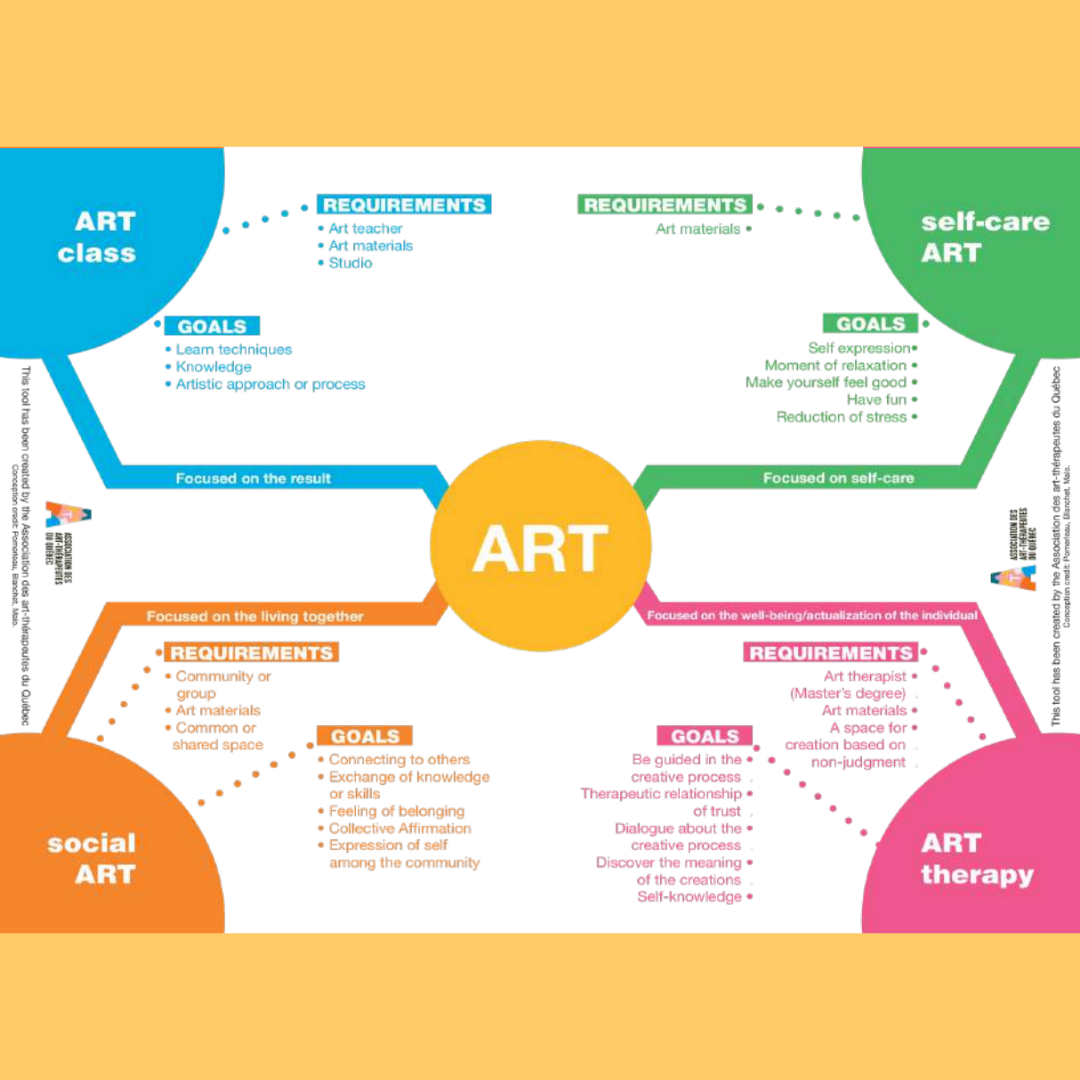I often get asked by new clients and others, “what exactly is art therapy?” I certainly don’t blame them! Compared to other methods of delivering therapy, art therapy is still a relatively young field.
With shops selling colouring books as “art therapy” and websites and influencers selling “therapeutic art” courses, it’s important that we do what we can to raise more awareness about the field and what exactly it is that we do.
With the support of a qualified art therapist, art therapy guides individuals in the creative process, helping people discover meaning in their creations and uncover a deeper sense of self.
The @associationarttherapeuteqc came up with this really handy chart to help us understand some key differences between ways of using art.
.
In my practice, we use art-making as a way to access different ways of understanding ourselves.
I figured that it might be helpful to expand on this chart and explain some key differences between “art AS therapy” and “art therapy”. I did this by creating a graphic version of a model that was adapted to art therapy.
In mental health, there is something called the, “stepped care” model. This model is a system of delivering mental health services in a series of “steps” that increase in intensity/specialization as needed by the person using the services. When adapting this model to art therapy, on one side of the spectrum we have “art as therapy” and on the other side we have “art therapy” .
As you can see, at many different levels of care, and intensiveness, there are venues and opportunities to use art to help facilitate the healing process. While self-care art like using a colouring book can be helpful for some people to help calm themselves, it’s not going to have the same individualized treatment and support that working 1-on-1 with a trained art therapist will.
Art has a special way of asking us to go beyond the verbal in order to express ourselves. Using symbols, metaphors, images, shapes, colours, we are given the chance to see our feelings through a different lens, often uncovering information that we weren't previously aware of! Creating in this way with the support and guidance of someone we trust can be an incredibly healing process.

